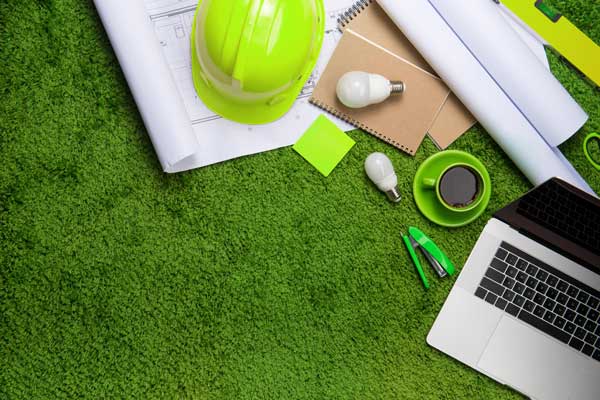
There are many benefits of eco-friendly homes, but just what is building green?
Building Green is a Process of Design and Construction that Reduces or Eliminates Items Negatively Impacting our Climate and Environment.
The main goal of green building is to protect and preserve our precious natural resources which improves not only our quality of life but that of future generations as well.
Traditional home construction can be disastrous for the environment. It can involve deforestation, groundwater disruptions, heat island creation, wetland drainage, and wildlife destruction. From the lot to the materials used in construction, there are many points that make up green construction.
Building Green is Reducing Waste and Pollution to the Environment. Re-Using and Recycling Materials as Much as Possible
According to a report by the EPA, approximately 160 million tons of debris from building construction and demolition is generated each year. This accounts for more than 26% of non–industrial waste creation in the country.
Another alternative to designing an entirely new home is to purchase an existing home and renovate it to include green features. Homebuyers can create their dream homes while reducing their ecological footprints by minimizing the use of raw materials, using already-developed land, and recycling materials.
Building Green is Reducing Harmful Toxins Indoors and Making Sure to Choose Non-Toxic Materials
Indoor air quality is an essential component of health and safety. By incorporating sustainable indoor air quality techniques into building construction, this ensures good indoor air quality throughout the building's life cycle.
Building Green is Efficient Use Of Energy And Water And The Use Of Renewable Sources Such As Wind Or Solar Energy.
According to the EPA, renewable energy systems–solar electric, wind electric, micro-hydropower, and hybrid electric–can supply some or all of a green home's electricity needs.
Reduce your energy consumption by using renewable energy sources such as daylighting, geothermal, groundwater cooling, passive solar heating, and photovoltaics.
Building Green is Choosing a Environmentally Conscious Design that is Adaptable and also has a Positive Impact on the Occupants.
The home's design is one of the most important factors to consider when constructing a green home. It affects the home's entire life cycle–site selection, design, materials development, construction, operations, maintenance, and deconstruction. Moreover, the home's size impacts costs for the lot, design and construction, and long-term use like energy and maintenance.
It is Important to Conserve and Preserve by Building Green
Earth is the only home we have. It provides us with food, water, the air we breathe, and supplies we need for shelter. We do not want to pollute our home and make it uninhabitable. We should all do our part to conserve and preserve this beautiful earth we call home.
It is also important to keep in mind, not only can residential homes be "green". Green construction can also apply to schools, government buildings, office building, hospitals, and more.
To order our Building Green CE course and more, visit our Real Estate CE course catalog or call 888-895-8839 to speak to a member of our support services team.
View Catalog